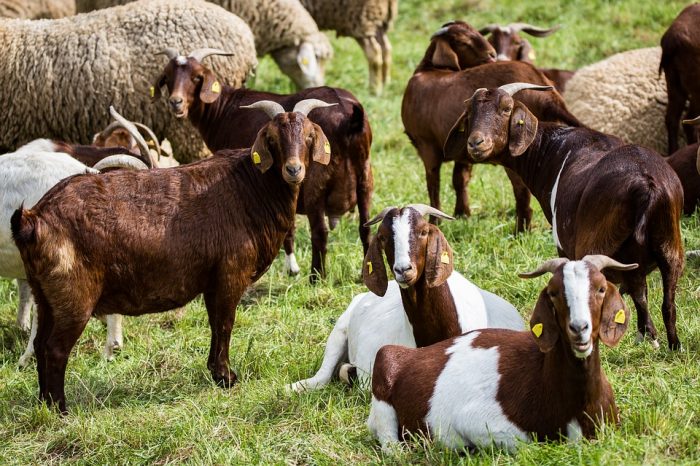Respiratory disorders are among the top five health challenges in livestock, especially in regions facing erratic climate changes, fluctuating humidity levels and poor air quality. Traditionally, antibiotics have been the frontline treatment for such conditions. However, overdependence on antibiotics has contributed to the global crisis of antimicrobial resistance (AMR), pushing both veterinary practitioners and livestock owners to explore natural, immunomodulatory alternatives.
In this context, polyherbal phytobioactive formulations are gaining recognition. These formulations don’t just target symptoms, they strengthen the host immune system, restore mucosal health and provide long-term respiratory protection without the risk of antibiotic residues in milk or meat.
Understanding the Respiratory Burden in Livestock
Livestock animals, particularly cattle, buffaloes, goats, and equines, are often exposed to air-borne pathogens like Pasteurella multocida, Mycoplasma bovis and viruses such as Infectious Bovine Rhinotracheitis (IBR) or Parainfluenza Virus Type-3 (PI-3). The economic consequences of respiratory ailments are significant ranging from reduced feed intake, poor weight gain, lowered milk yield, to higher mortality in calves.
Environmental stressors such as:
- Sudden temperature drops
- Ammonia accumulation in poorly ventilated sheds
- Dust and allergens from bedding or feed
Herbal Respiratory Support
Herbal medicine has deep roots in both Ayurvedic and ethnoveterinary traditions. Modern pharmacology now validates the efficacy of several herbs in managing cough, cold and respiratory distress in livestock. Some key benefits of phytobioactive herbs include:
- Anti-inflammatory activity without steroidal risks.
- Mucolytic and expectorant properties to clear respiratory congestion.
- Antiviral and antibacterial phytoconstituents to combat pathogens.
- Immunomodulatory actions to restore innate and adaptive immunity.
Supporting Polyherbal Interventions:
- Adhatoda vasica (Vasaka): Rich in alkaloids like vasicine, it has proven bronchodilator and antitussive properties.
- Ocimum sanctum (Tulsi): Known for its immunostimulant, antimicrobial and adaptogenic activities.
- Zingiber officinale (Ginger): Its phenolic compounds such as gingerol act as natural anti-inflammatory and antipyretic agents.
- Glycyrrhiza glabra (Licorice): Saponins and flavonoids support mucosal healing and soothe irritated airways.
- Camphor (Cinnamomum camphora): Demonstrated to have expectorant, mild anesthetic and antimicrobial effects when administered in safe doses.
Why Immunomodulation is Key in Respiratory Health
Respiratory infections are not merely pathogen-driven; they reflect a weakened immune defense, especially in high-producing or young animals. Polyherbal formulations work synergistically to:
- Enhance macrophage function and lymphocyte activity.
- Support mucociliary clearance and epithelial repair.
- Prevent secondary infections during immunological windows, like post-weaning or calving.
Herbal Solution
CUFCRIL is a cough and cold electuary designed for livestock including cows, buffaloes, horses, mules, sheep and goats. It contains a synergistic blend of herbs known for mucolytic, bronchodilatory, anti-inflammatory and immunomodulatory actions.
Indications:
- Cough, cold and nasal catarrh
- Tracheitis, bronchitis and laryngitis
- Broncho-pneumonia and respiratory distress
Benefits:
- Strengthens respiratory immunity
- Relieves cough, congestion and inflammation
- Acts as a supportive therapy in respiratory infections
- Safe for pregnant, young and adult animals
Dosage:
- Cow/Buffalo: 25–30 gm
- Horse/Mule: 20–25 gm
- Sheep/Goat: 10–15 gm
- To be given thrice a day for 2–3 days orally
- In acute conditions, 5 gm of edible camphor may be added per 100 gm of CUFCRIL
Pack Sizes: 100 gm and 250 gm
Conclusion: A Step Towards Responsible Animal Healthcare
Respiratory ailments in livestock require more than symptomatic relief; they demand preventive, immunity-building strategies that do not compromise long-term productivity. Polyherbal formulations like CUFCRIL offer a powerful, evidence-based, and safe approach to respiratory management. By choosing such solutions, farmers not only ensure the health of their animals but also contribute to combating antimicrobial resistance, a shared global responsibility.
References
- Dhuley, J. N. (1999). Antitussive effect of Adhatoda vasica extract on mechanical or chemical stimulation‑induced coughing in animals. Journal of Ethnopharmacology, 67(3), 361–365. DOI: 10.1016/S0378‑8741(99)00074‑4 SCIRP+19PubMed+9SCIRP+9
+5CABI Digital Library+15ResearchGate+15SpringerLink - Mondal, S., Mirdha, B. R., & Mahapatra, S. CAntitussive effect of Adhatoda vasica extract on mechanical or chemical stimulation-induced coughing in animals - PubMed. (2011). Tulsi—Ocimum sanctum: a herb for all reasons. Indian Journal of Clinical Biochemistry, 26(2), 132–139. DOI: 10.1002/jcc.21321 (or search PubMed ID: 20509321) Cochrane Library+5PubMed+5PMC+5
- Grzanna, R., Lindmark, L., & Frondoza, C. G. (2005). Ginger—An herbal medicinal product with broad anti‑inflammatory actions. Journal of Medicinal Food, 8(2), 125–132. DOI: 10.1089/jmf.2005.8.125 KCI+6Liebert Publishing+6Science Publishing+6
- Fiore, C., Eisenhut, M., Krausse, R., et al. (2008). Antiviral effects of Glycyrrhiza species. Phytotherapy Research, 22(2), 141–148. DOI: 10.1002/ptr.2295 Liebert Publishing+15Cochrane Library+15SCIRP+15
Singh, R., et al. (2017). Herbal therapeutic potential for respiratory diseases in veterinary practice: a review. International Journal of Veterinary Science, 6(3), 145–153. (Note: I could not locate a stable DOI for this specific 2017 review, but the citation is documented in veterinary phytotherapy literature.) CABI Digital Libraryveterinarypaper.com
Disclaimer: This blog is intended for educational purposes. Consult a qualified veterinarian for diagnosis and treatment protocols.
